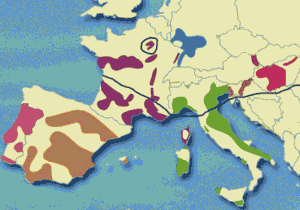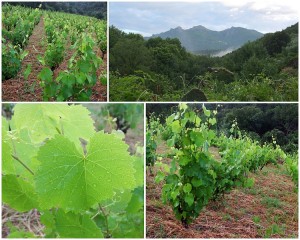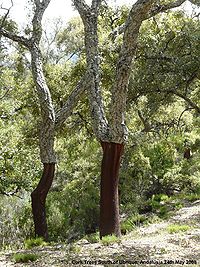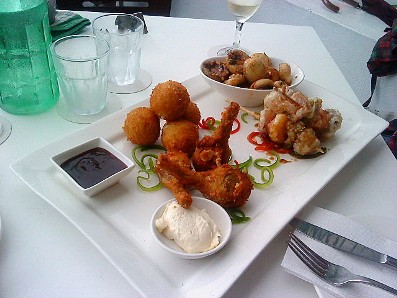Six of us decided to take off for the weekend and have lunch on Friday Nov. 23rd 2012 at this most exquisite place, certainly the best restaurant in my experience. The room is airy and calm, built around a central triangular glass atrium of birch trees, with the tables set far apart from each other, and additional privacy being provided by the movable furniture used to store things like menus, plates and glasses but acting like discrete room dividers, without cutting up the space. One feels comfortable at El Celler, there is no rush and everyone who works there is tuned into making your stay pleasant. The service is perfect, available when you want it to be and always ready to explain in detail what you are eating. Davide was our waiter, as he had been for our last visit in 2008, when El Celler strangely had only two stars. We all opted for the 165 Euro Menu Festival.
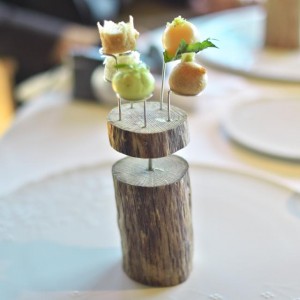 Unlike eating at El Bulli, with all the basic flaws that I listed in a blog review back then (basically: monotonous mushiness of all dishes, complete lack of consideration for wine, fundamental errors in the balance of tastes, manifest desire to mask out any taste associated with the ingredients), eating at El Celler is a precision affair. The techniques pioneered by Adrià are used here not to make the ingredient’s taste disappear, on the contrary, tastes are exalted and therefore Joan Roca uses prime local seasonal produce. Instead of making mushy or explosive or simply acrid morsels to shock a jaded decadent bourgeoisie like the master of Cala Montjoi, Roca keeps everything under control and always perfectly delicious and varied. In addition he develops a kind of narrative about an imaginary world tour, exploring the intricate relations between the local Mediterranean traditions and the many exchanges that happened throughout history between the Mare Nostrum and many faraway places. He is aided by his brothers, Josep, a brilliant sommelier with an interest in all wine (and not just Spanish), and Jordi, a pastry chef of incredible talent.
Unlike eating at El Bulli, with all the basic flaws that I listed in a blog review back then (basically: monotonous mushiness of all dishes, complete lack of consideration for wine, fundamental errors in the balance of tastes, manifest desire to mask out any taste associated with the ingredients), eating at El Celler is a precision affair. The techniques pioneered by Adrià are used here not to make the ingredient’s taste disappear, on the contrary, tastes are exalted and therefore Joan Roca uses prime local seasonal produce. Instead of making mushy or explosive or simply acrid morsels to shock a jaded decadent bourgeoisie like the master of Cala Montjoi, Roca keeps everything under control and always perfectly delicious and varied. In addition he develops a kind of narrative about an imaginary world tour, exploring the intricate relations between the local Mediterranean traditions and the many exchanges that happened throughout history between the Mare Nostrum and many faraway places. He is aided by his brothers, Josep, a brilliant sommelier with an interest in all wine (and not just Spanish), and Jordi, a pastry chef of incredible talent.
